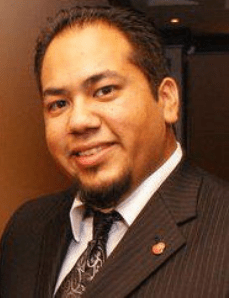Meet the chief data officers

What does it mean to be a city’s ‘chief data officer’?
That’s a relatively new question to ask: The position — in the few dozen cities where it exists — has been around for only about five years. And, in this short period of time, it’s a position that has both evolved and rocketed to the frontlines of city innovation.
In the beginning, chief data officers, or “CDOs,” started with one primary responsibility. When the transparency movement swept into cities, they were the ones tasked with building “open data portals” where vast amounts of city data were made public.
While that work continues, CDOs are shifting into a new, more strategic role. A growing number of cities are moving to make decisions based on data and evidence, in order to deliver better results and more efficient services for residents.
As that happens, these CDOs have become evangelists for the culture change this work requires in city halls, as well as agitators for getting the rank-and-file on board. They’ve also been thrust into emerging debates over privacy, sharing public data with private companies, the use of algorithms in government, and more.
“It’s becoming a high-level role,” said Beth Blauer, head of the Center for Government Excellence at Johns Hopkins University, which has worked with a number of cities on defining the position. “These are people who are thinking about data as a strategic asset, and surfacing it to drive decision-making on a number of fronts.”
To succeed, today’s CDOs need to be both data geeks and keen communicators. On the technical side, many have backgrounds in data science and know the latest software tools to crunch numbers and produce visualizations. At the same time, they increasingly need to be able to hold their own in negotiations with department heads or explain the big picture to the mayor or city manager — why the numbers matter.
“Chief data officers have to be good at finding data and loosening it, getting it out of the data systems and into policy and program decision-making,” said Simone Brody, who leads What Works Cities, a Bloomberg Philanthropies initiative that helps cities step up their use of data to solve problems. “They also have to demonstrate the value they provide in terms of helping agencies deliver better outcomes for residents.”
To help city leaders better understand who today’s chief data officers are and what value they bring to government, Bloomberg Cities spoke with three of them. Here’s what they had to say.
Sari Ladin-Sienne, Los Angeles
Early in her career, Sari Ladin-Sienne worked as a data analyst, poring over federal statistics on occupational injuries and illnesses. “It was something not every 22-year-old would find fascinating, but I did,” she said. But there was something about the work that bothered her. While the data offered clues about workplace hazards in different industries, nobody was using it to educate workers or inform policy.
“There was a major gap between how much data was collected and how little of it turned into evidence to reform and improve policy,” she said.
Now working for the city of Los Angeles, she’s committed to filling that gap and seeing that agencies put their data to productive use. “My role is to evangelize,” Ladin-Sienne said, “and to uncover what the return on investment is on city operations from using data.”
One example: As the city ramped up efforts to curb homelessness last year, Ladin-Sienne collaborated across agencies to create a homelessness data hub. By combining the city’s homeless census with social indicators such as populations that have experienced trauma, and economic indicators such as wage stagnation and rent burden, the hub gave decision-makers intelligence on where to most effectively invest in new shelters and services.
[Read: Data-driven women to watch]
Working for a big city like L.A., Ladin-Sienne has more resources to draw on than her counterparts in smaller localities. She has two other staff, including a data scientist and a program manager, and is based in the Mayor’s Office of Budget and Innovation, where her work sits close to top leadership. Plus, some departments in L.A. have their own data teams internally, meaning that Ladin-Sienne can focus more of her energy on departments that could use the help.
Also critical to Ladin-Sienne’s success is working for a mayor, Eric Garcetti, who is famous for taking a data-driven approach to problem solving. “Many people struggle to show the value of their data shops, but that’s one of the gifts of working for this mayor,” she said. “I have to do some persuasive work within the city, but in terms of the political will — it’s there.”
Andres Castaneda, Laredo, Texas
When Laredo joined What Works Cities in 2017 and began pushing into open data, it wasn’t clear, at first, if the position of chief data officer would be a full-time job. Andres Castaneda argued it should be.
Castaneda was a longtime specialist in mapping and analyzing data for the city, and the top candidate for the job. He could see that the position would evolve into something bigger than simply taking stock of city datasets and making them public.
“My argument was that the person who’s seen all these datasets starts to become the dictionary of where all that data is,” he said. “So who best to analyze the data, share the data, connect these data sources over time and see what we need going forward?”
Castaneda got the job, and a memo from the city manager telling departments to cooperate when he made data requests of them. His first mission was to build Laredo’s open data portal, where residents can easily see what the city spends money on, as well as information on on roads, building permits, and other topics.
Lately, Castaneda has been pushing into more strategic uses of that data. When Mayor Pete Saenz wanted to get a clearer picture of poverty in Laredo, Castaneda pulled together housing, health, crime, and transportation data down to the census-block level. With help from a Harvard fellow via the Bloomberg Harvard City Leadership Initiative, he mapped the data and presented it to the city council. “Now, we’re able to ask questions that help us strategically apply resources to the source of the problem,” Saenz said.
[Read: Emerging insights from the Bloomberg Harvard City Leadership Initiative]
In a small city like Laredo, resources are a challenge. Castaneda said you’ll still find typewriters and word processors around City Hall because some forms and processes still require paper. Just getting some departments on board with keeping good records, let alone making strategic use of data, remains part of Castaneda’s struggle.
On the flip side, because he’s in a small city, Castaneda has the benefit of knowing almost everybody he needs to collaborate with personally. Both in his current role and his previous ones with the city, he’s established himself as the go-to resource to help all departments up their data game. “The chief data officer,” Castaneda said, “should be seen as the face of city data.” In Laredo, that’s already true.
Brandon Crowley, Cincinnati
Like a number of today’s chief data officers, Brandon Crowley is a familiar face around City Hall. He started with the city of Cincinnati back in 2000, and worked his way up through the IT department. When the city manager saw Boston, Chicago, and other cities launching open-data portals, he tapped Crowley in 2015 to build one for Cincinnati.
Crowley works under the chief performance officer, as part of a broader initiative around delivering “better, faster, and smarter services.” Data fits into that mission in lots of ways, both internally within the city administration and externally facing the public.
Internally, Crowley pulls together department-level data for CincyStat meetings. These are regular sessions where department heads sit down with the city manager and chief performance officer to review how they’re doing on key measures, identify problems, and develop solutions.
Externally, Crowley is working to make sure that “open data” isn’t just a big idea but a useful tool in residents’ lives. Beyond building the city’s open-data portal to publish raw numbers, Crowley teamed up with the chief performance officer to build a data visualization platform called CincyInsights. This is where residents can find answers to real-world questions, presented in an accessible format: Has today’s trash pickup happened yet? Where is crime happening? Which restaurants have code violations?
One recent addition is especially useful this time of year: snow-plow tracking. Crowley tapped into GPS tracking on the trucks and wrote code that updates every 15 minutes where the trucks have been during snow events. Crowley said this rapid refresh rate is critical to providing residents information that makes a real difference in their here and now. Is it safe yet to drive to the grocery store? Now, in a snowstorm, residents can find the answer.
“One thing we learned is your portal is only as effective as the refresh rate of the data,” he said. A one-man shop, Crowley has built lots of tools to automate the updates “because we have to keep the data fresh and relevant.”
[Read: The promise and peril of algorithms in local government]
Four years into his stint as CDO, Crowley has found that open data is not as simple as publishing spreadsheets to the web. It’s a job in continuous evolution, finding new relevance every time there’s a new problem that the city can use data to help solve.
“Data transparency is really an ongoing initiative,” he said, “because you’re always going to have opportunities to make a dataset more robust. Or you’re going to have new requirements or regulations that are going to cause you to refine what you’re doing. Or there will be new systems to adapt to. You can’t just have a policy in place that does not change. You have to continually review your policies and build on them.”





